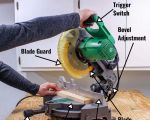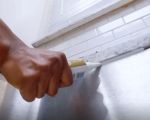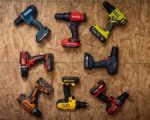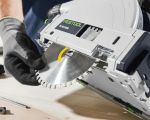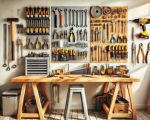- 1-Understanding-Hole-Punch-Tools-for-Leatherworking
- 2-Preparing-Your-Leather-and-Workspace
- 3-Selecting-the-Right-Hole-Punch-Size
- 4-Step-by-Step-How-to-Use-the-Hole-Punch-Tool
- 5-Common-Mistakes-to-Avoid-in-Leather-Punching
- 6-Real-Life-Examples-from-Leatherworkers
- 7-Finding-Quality-Tools-at-ToolNest
1. Understanding Hole Punch Tools for Leatherworking
Leatherworking requires precision and the right tools to achieve clean, professional results. One essential tool is the hole punch, designed specifically to create holes for stitching, riveting, or hardware installation. These tools come in various types, including rotary punches with interchangeable tips, manual pliers-style punches, and hammer-driven punches.
Knowing the differences helps you select a tool that matches your project needs and skill level. For example, rotary punches offer versatility with multiple hole sizes, while hammer punches provide more control for heavy-duty leather. Understanding these tools is the foundation for mastering how to use a hole punch tool for leatherworking effectively.
1.1 Why Using the Right Hole Punch Tool Matters
Using the correct hole punch not only ensures neat holes but also preserves the integrity of your leather piece. Poor-quality or improper tools can cause uneven cuts, tears, or damage that weaken the finished product. Investing time in learning the proper technique with the right punch tool pays off in durability and aesthetic appeal.
2. Preparing Your Leather and Workspace for Hole Punching
Before punching holes, prepare your leather by marking exact points where the holes will go, using a pen or scratch awl for precision. A stable, flat workspace is critical; use a sturdy cutting mat or a piece of scrap wood underneath to protect surfaces and prevent tool damage.
Maintaining a clean and well-lit area allows for better accuracy and safety. Organizing your tools within reach streamlines the workflow and minimizes interruptions. Proper preparation sets the stage for a smooth hole-punching process.
3. Selecting the Right Hole Punch Size for Your Project
Choosing the correct hole size depends on your project’s requirements. Common hole diameters range from 1mm for fine stitching holes to 6mm or larger for buckles and rivets. Consider the thickness and type of leather as well; thicker leather often requires larger, sharper punches to penetrate cleanly.
Testing punch sizes on scrap leather is a smart way to ensure the holes fit your hardware and stitching without damaging your main piece. This trial and error phase is an important part of mastering the skill.
4. Step-by-Step Guide: How to Use the Hole Punch Tool for Leatherworking
Step 1: Mark your hole positions clearly on the leather surface.
Step 2: Select the appropriate punch size and attach it securely if using a rotary punch.
Step 3: Place the leather on your sturdy work surface with the marked side facing up.
Step 4: Position the punch tip exactly over the mark, ensuring it’s perpendicular to the leather.
Step 5: Apply firm, steady pressure. For manual punches, squeeze the handles fully; for hammer punches, strike the punch evenly with a mallet.
Step 6: Remove the punch and check the hole for cleanliness. If necessary, repeat or trim edges with a small knife.
Step 7: Clean the punch tool and store it properly after use to maintain sharpness.
5. Common Mistakes to Avoid When Using a Hole Punch Tool
Avoid punching holes too close to the leather edge, which can cause tearing. Also, don’t rush the process—applying uneven force may lead to jagged holes. Using dull punches is another frequent error that results in ragged cuts and frustrated crafters.
Proper maintenance of your tools, combined with patience and precision, helps avoid these pitfalls and produces professional-quality results consistently.
6. Real-Life Examples from Experienced Leatherworkers
Jessica, a leathercraft hobbyist, recalls struggling with uneven holes on her first projects until she switched to a high-quality rotary hole punch and practiced consistent pressure. Her leather belts and wallets now feature perfectly clean holes, impressing friends and clients alike.
Similarly, Mike, a professional leatherworker, emphasizes the importance of workspace setup and punch size testing. His advice is to always prepare meticulously and not skimp on tools, which has made his business thrive through durable and attractive products.
7. Finding Quality Hole Punch Tools and Accessories at ToolNest
For those looking to invest in reliable hole punch tools and leatherworking supplies, ToolNest offers a curated selection tailored to beginners and professionals alike. Their range includes rotary punches, plier-style tools, mallets, and cutting mats, all designed to enhance your craftsmanship.
With expert guidance and customer support, ToolNest ensures you find the right tools to master how to use a hole punch tool for leatherworking effectively, boosting both confidence and project quality.


